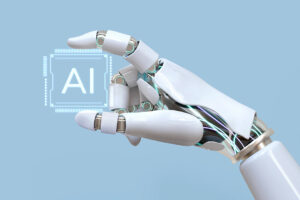PHILIPPINE BUSINESSES can benefit from cheaper and less resource-intensive small language models (SLMs) of artificial intelligence (AI), according to an IBM Philippines top official.
“We should have SLMs, which use a smaller compute capacity, which become consumable and more affordable as far as users are concerned for the business,” IBM Philippines President and Technology Leader Aileen Judan-Jiao told a news briefing on Tuesday.
Unlike large language models — AI systems that can understand and generate human language by processing massive amounts of text data like Open AI’s Chat GPT-3 and GPT-4 — SLMs are smaller and trained on data for a specific domain.
AI is helping companies work smarter, not harder, as they apply the technology more widely from customer service to HR to code modernization.
IBM said companies can use AI to improve efficiency and lower costs. One of the popular uses of AI is chatbots and digital assistants for customer service. By using machine learning algorithms, AI can understand what customers are saying and their tone.
Medical institutions use AI automation to provide data analysis, diagnosis and treatment. Chatbots also lessen human intervention in healthcare appointments and shorten diagnosis time.
In retail, AI gathers information to better understand customers and their preferences during online shopping, while generative AI (GenAI) can help plan marketing campaigns.
IBM touts its watsonx.ai as open source, pre-trained foundation models that make AI and automation easier. These models are flexible and reusable and can be applied to just about any domain or industry task, according to its website.
With a foundation model that uses a neural network called a “transformer” and leverages a technique called self-supervised learning, one can create pre-trained models for a vast amount of unlabeled data, IBM said.
“The model can learn the domain-specific structure it’s working on before you even start thinking about the problem that you’re trying to solve. This is usually text, but it can also be code, IT events, time series, geospatial data or even molecules.”
IBM cited an estimate by the University of Washington, where training a single GPT3-sized model requires the yearly electricity consumption of more than 1,000 households.
A standard day of ChatGPT queries is equivalent to the daily energy consumption of 33,000 households.
Ms. Jiao said IBM’s 13-billion parameter Granite model family is an example of a small language model with fewer error rates, “meaning you can make it smaller with a lot more accuracy.”
She also cited an IBM Institute for Business Value that found that 82% of Filipino chief executive officers said they would take more risks to keep their competitive edge.
About 58% said competitive advantage would depend on who has the most advanced generative AI.
IBM has also introduced its GenAI-powered employee support AskHR, which covers various processes such as payroll compensation, benefits, and rapid and expense routes.
The company said the chatbot and platform let managers and employees focus on more strategic work and important operational decisions. — Aubrey Rose A. Inosante





